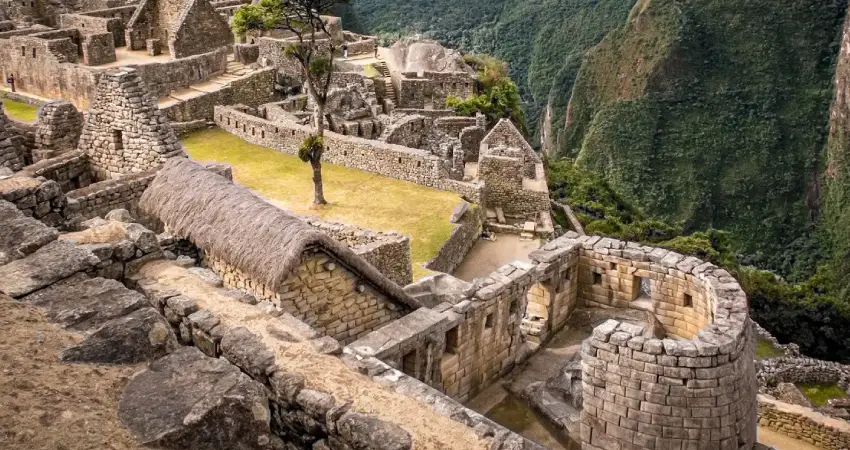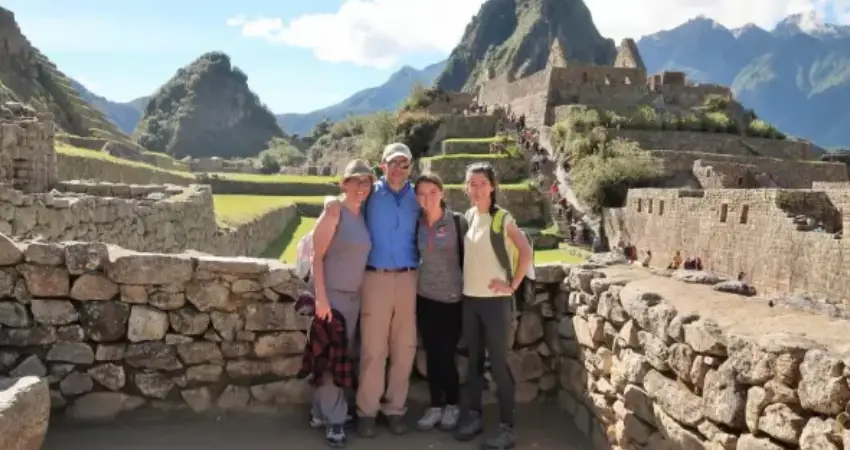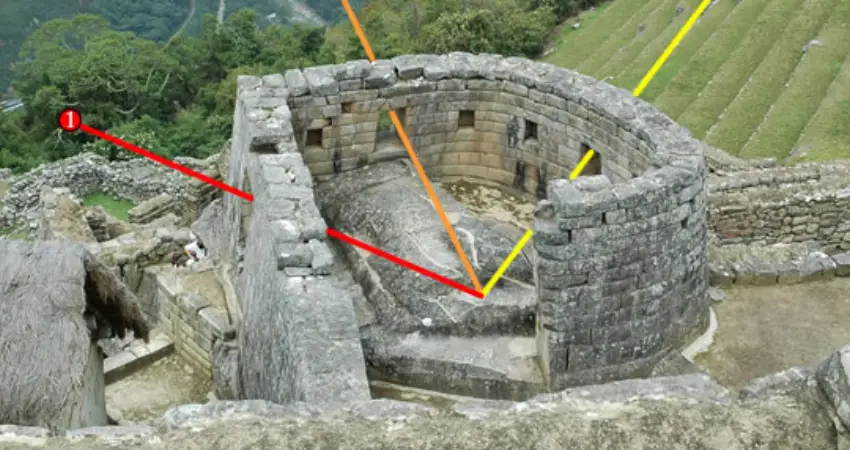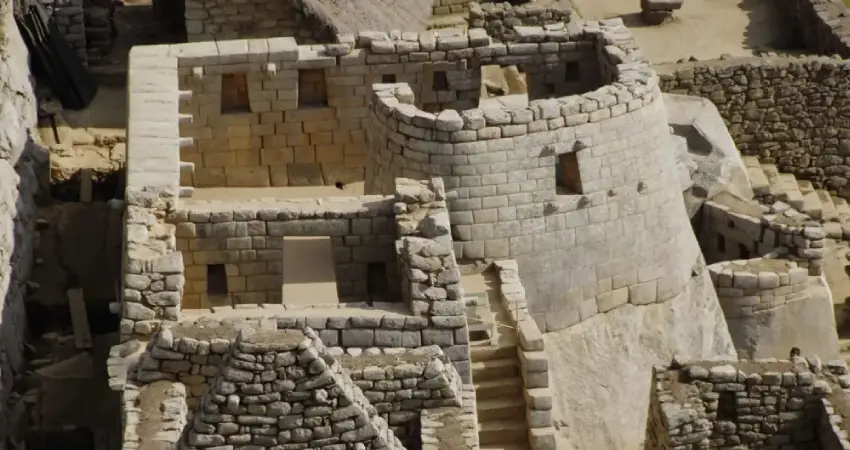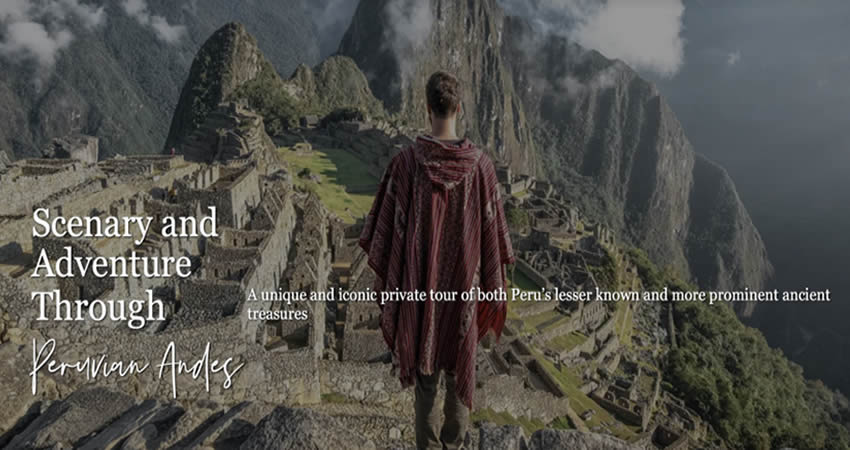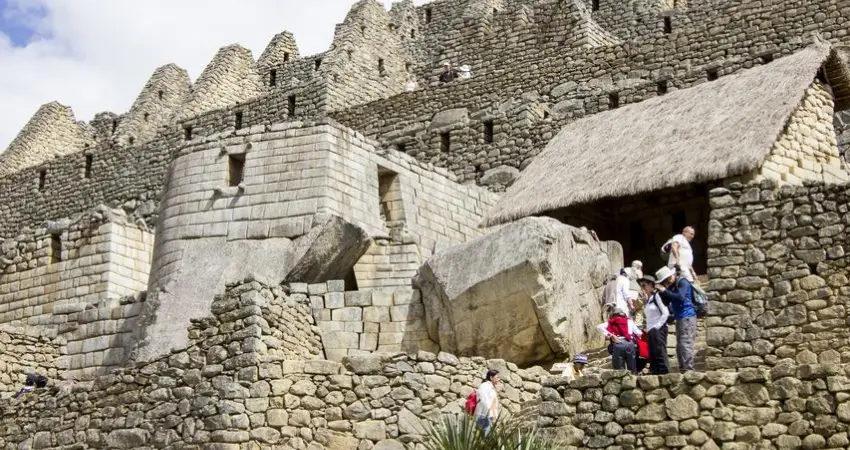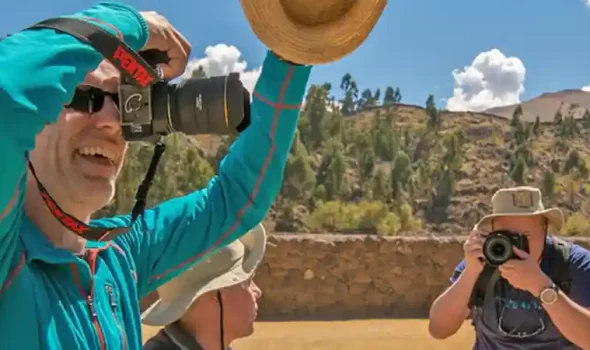1.- INTRODUCTION TO THE TEMPLE OF THE SUN MACHU PICCHU
1.1.- Historical Context and Significance
The Temple of the Sun Machu Picchu is considered one of the most emblematic and mysterious places that you can find inside the city of the Inca making clear a great connection that exists since the time of the Inca culture in which there was a direct relationship with nature, the cosmos and of course the belief in divinities. Unlike other Temples of Machu Picchu, the Temple of the Sun Machu Picchu stands out at first sight for being a structure of sacred purpose that at first sight impresses all visitors by the fine finish in its architectural details in addition to what mysteriously is the liver with astronomical phenomena in which directly participates the sun as the representative of the Inca cosmogony.
1.2.- Location of the Temple of the Sun Machu Picchu
A particularity of the Inca Citadel is that being an extensive territory contains several areas that are clearly marked, among the most prominent areas we can find the Temple of the Sun Machu Picchu, being more specific in the upper area of the archaeological complex quite close to the main square, of course this is not mere coincidence in fact is a carefully chosen place as it is oriented towards the east, in this way allows the Temple of the Sun Machu Picchu can witness the first rays of the sun directly and thus can be interpreted during important events such as equinoxes and solstices, this was the technique in which the Incas demonstrated their complete mastery of astronomical observation. This construction is made of a set of semicircular stone walls that surround a small cave that is also popularly known as the cavern of the sun where it is believed that the most sacred religious rituals of sun worship were performed.
The whole enclosure of the Temple of the Sun Machu Picchu is directly related to the stone monolith sculpted at the top also known as Intihuatana, its name comes from the Quechua word which means where the sun is tied, apparently had a primordial role also considered as a sundial. This design was not random, in fact it is believed that both the location and the elements that were used for its construction make the area where the Machu Picchu temple of the Sun was built strategic and directly related to an astrological and ceremonial purpose.
| “Every journey starts with a single step.” |
1.3.- Cultural significance of the Temple of the Sun Machu Picchu
The Inca culture was a polytheistic society, in which they worshiped multiple gods linked to nature and the cosmos, among them is the main deity that for the Incas was the maximum exponent of the divine world, the sun god also called Inti in the Quechua language. Of course, this belief towards the sun was not only focused within a religious aspect but also in a political way since the sovereign of the culture, the Inca, was considered the son of the sun and thanks to this legitimacy he was considered as a direct link with the deity. For this reason it is believed that the Temple of the Sun Machu Picchu was not only a sacred place in fact it was a symbol of the supreme power that the Inca sovereign had and what was his direct link with the sun god.
In a cultural way the Inca city of Machu Picchu and specifically the Temple of the Sun Machu Picchu had a very important role as a center of rituals and ceremonies within the high social class of the Inca culture. In fact it is also believed that the Temple of the Sun Machu Picchu was intended as a pilgrimage center where essentially Andean priests and members of the high social class of the Inca culture could perform ceremonies related to protection and fertility, thus seeking the stability of the entire culture.
1.4.- Astronomical importance of the Temple of the Sun Machu Picchu
Thanks to the studies carried out inside the Machu Picchu temple of the Sun, it is known that the specific function it had was to mark and orient the solstices and equinoxes that occur throughout the year, these were extremely important astronomical events for the Inca culture as it was directly related to activities such as agriculture. During the winter solstice it could be seen how the sun in a direct and at the same time perfect way was aligned with the Intihuatana, which is believed to have been part of a ritual of gratitude due to the income they had after the darkness of winter. Within the Andean cosmogony the sun is considered as one of the essential forces of nature that at the same time preserves the order within the universe and being the main supplier of energy, for this reason ceremonies were constantly performed in gratitude essentially inside the Temple of the Sun Machu Picchu and also in other places like in Cusco.
2.- ARCHAEOLOGICAL DISCOVERIES AND RESEARCH
There is no doubt that the Temple of the Sun Machu Picchu has been one of the most studied places inside the city of the Inca but not only for the religious and at the same time astronomical importance that it possesses in fact it is also for the discoveries made during the last cycle of research. The first excavations in this place began in the twentieth century and in fact since then our conservation and restoration efforts have been increasing progressively, specifically the Temple of the Sun Machu Picchu has become a point of attention for many scholars as archaeologists and experts in the preservation of cultural heritage.
The archaeological studies that have been carried out inside the Inca city of Machu Picchu represent an extensive process that continuously had intervention and participation in focusing them also in the surroundings of the Temple of the Sun Machu Picchu, all this territory has been revealing very important aspects about the religious and at the same time urban life that the Inca culture could have had inside the city of the Inca on top of a mountain. It should be noted that the Temple of the Sun Machu Picchu is also considered as the main structure where over time have been found various artifacts such as ceramic fragments, remains of offerings used in ceremonies and rituals, stone tools and even unique elements within ceremonies such as coca leaves, all in honor of being able to worship the sun god and in some cases also to other deities.
All studies conducted in this territory around the Temple of the Sun Machu Picchu determine that they were also used for religious activities, in fact thanks to the studies have been determined that there are also small platforms that could serve as a rallying point for Andean priests who could attend these religious events. In the same way archaeologists over time discovered a large number of subway passageways and structures that are directly linked to astronomy, thus fully reinforcing that the Temple of the Sun Machu Picchu was not only a religious place but was also used as a cosmic observatory where various ceremonies were held directly related to astronomical events.
2.1.- First discoveries
Today we know that the Inca citadel of Machu Picchu was scientifically discovered by the explorer Hiram Bingham in 1911, which marked a before and after in history. This explorer is actually in search of the lost city of the Incas and in fact not only documented the archaeological center but also made many preceding excavations but due to the printer was not very methodical and thorough as it can be today. During these investigations he found and photographed part of the Temple of the Sun Machu Picchu, however at the same time he made many mistakes such as removing artifacts and at the same time structures that were destined to be moved to museums in North America without the consent of the Peruvian government which led to a great misunderstanding and subsequent conflict, of course this does not detract from the merit that Hiram Bingham had in the discovery of the Inca city of Machu Picchu making it known worldwide.
3.- THE IMPORTANCE OF THE SUN
“Although it was a polytheistic culture in terms of religious beliefs, the Incas sent a main worship to the sun so building a temple in his honor was so important that it was recreated in multiple archaeological centers that are within its territory. Even in the city of Cusco, which was considered the center of the world, there was also an enclosure like this and it was catalogued as the center of everything.”
4.- FAQs ABOUT THE TEMPLE OF THE SUN MACHU PICCHU
- Who built the Temple of the Sun?
Like many other constructions it is attributed that the final construction of the Machu Picchu temple of the Sun is directly related to the ruler Pachacutec and his successor, as it is mainly related to this Inca with an expansion of the entire Inca culture on the territory that today we know as the Tahuantinsuyo.
- When was the Temple of the Sun constructed?
It is estimated that the construction of the Temple of the Sun Machu Picchu was during the golden age of the Inca culture, considering the fifteenth century as a reference between 1450 and 1460. These dates are no coincidence, as they are directly related to the period in which the Inca ruler Pachacutec was the one who solidified the whole culture and expanded the territory.
- What was the primary purpose of the Temple of the Sun?
The main purpose of the Temple of the Sun Machu Picchu was religious and at the same time astronomical. Directly the whole structure was related to the Sun God who was the most important deity in the Andean cosmovision, however it also had a second use and since it was not only used in ceremonies but also as an astronomical observatory that directly linked the solar projections with activities such as agriculture.
- How does the Temple of the Sun relate to Inca religious beliefs?
It is linked in a direct way to the Temple of the Sun Machu Picchu with Andean religious beliefs in which God alone occupied the main place being also seen as a source of life, fertility and prosperity at the same time. In fact, in complementary aspects such as politics, it was said that the Inca ruler was actually the son of the sun and was seen as a being who maintained a divine connection with this deity.
During your next vacation make sure to visit all the most important places so you can have a more complete and enjoyable experience, definitely a visit to the Temple of the Sun Machu Picchu is a must. Auri Peru is a specialist in organizing trips in this way, you can contact us now and start your personalized planning.
“Go see the world before it’s too late.”




